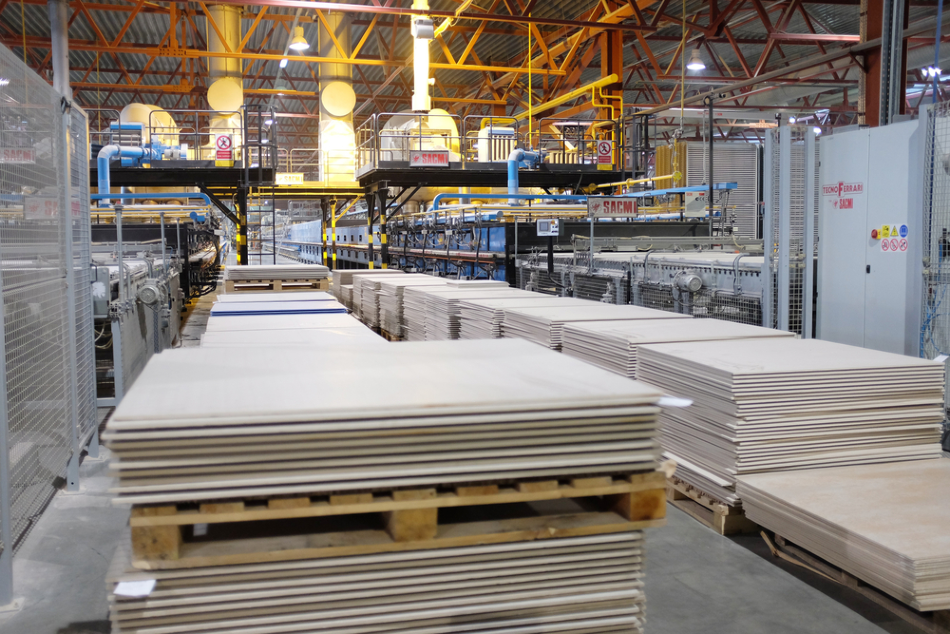
Technical ceramics are used in many manufacturing processes due to their unique thermal, electrical and physical properties. Image Credit: Alexander Davidyuk/Shutterstock.com
Technical ceramics, also known as advanced ceramics, offer previously unmatched materials for several manufacturing processes. Their unique thermal, electrical, and physical properties have been introduced to various production methods.
Technical ceramic application has not only been deemed the cornerstone of revolutionary developments, but also the most cost-effective and efficient material to ever exist in respected manufacturing processes. Since these materials can also prolong product lifespan, conventional materials such as plastic, glass, and metal, are gradually being replaced with the application of technical ceramics.
The unique ceramics have malleable features that can be advanced, combined, and perfected for use in technical applications. Technical ceramics’ high purities - metal compounds that are combined with nitrides, carbides, or oxides - are the reason for their groundbreaking performance levels. Competing materials like glass and metal cannot optimize manufacturing processes, nor can they operate at the same high-performance level as technical ceramics. The technical obstacles that once seemed impossible to overcome with traditional materials are now being made feasible with the application of technical ceramics.
General properties that make technical ceramics so powerful and useful include abilities to resist any type of wear; such as, corrosion, reshaping, melting, stretching, and distortion. This immense stability and unparalleled resistance pedestals these working materials as the most unique and versatile applications for any industrial job.
Types of Advanced Ceramic Materials
Advanced ceramic materials cover a large scope of industry practices and applications. Therefore, various types of these technical substances exist, some being: alumina, silicon carbide, silicon nitride, and zirconia. In response to various manufacturing difficulties, more and more technical materials are being created. Each material has special features to optimize the performance and desired outcome for almost any application.
Advanced Ceramics Applications
Technical ceramics differ from decorative ceramics because their application is focused on industrial work. Manufacturers exercise these materials when jobs require a high percentage of mimicked alumina construction and zirconia assemblage.
Currently, advanced ceramics are the only suitable application for manufacturing heavily pressured parts in machines and devices. The highly resistant nature of these materials, as well as their chemical reluctance, dielectric strength, thermal qualities, hardness, and metallization, have ensured their suitability for cutting tools, pins, nozzles, and other stressed parts of machinery.
Chemical Applications of Technical Ceramics
Chemical applications of technical ceramics are found in seals, impellers, and tubes. Seals are placed in rotating machinery and prevent any leaking between the shaft and pump casing. Therefore, they are required to overcome the external pressures of liquids, heat, and chemicals. Metal has formerly been used to form impeller structures, but easily wears and fails to overcome the harsh pressures the machinery is faced with. The severe wear tends to contaminate the chemical and lessen the lifetime of impellers. Tubes are used in molten metal industries. It is vital that the application of technical ceramics, compared to Inconel metals, can fight erosion, as well as chemical and thermal instability.
Industrial Wear Applications of Technical Ceramics
Shot blast nozzles and paper dewatering foils are two of many industrial wear applications of technical ceramics. The former tool shoots out a sand-like substance at high velocities through a nozzle that is coated with durable material. Advanced ceramics make up the lining of the nozzle and help optimize the best shot while being the most wear-resistant material. However, paper dewatering foils are part of a much different process. Technical ceramics are the only materials that can handle the wear and thermal shock of the challenging process that these foils undergo.
Electric Resistance Welding and Ceramics
The metal forming product, a ceramic weld roll, is used in electric resistance welding. During the electric welding process, the welding rolls add pressure to a tube while metal is heating up. A combination of excess heat and direct wear call for the strong and resistant features of technical ceramics. Their applications help make the most thermal and electric shock resistant welding rolls for many types of tubes and pipes. Extrusion dies, which are also a metal forming product, are implemented for the extrusion of certain alloys, such as copper and brass. Advanced ceramics are applied to these dies to guarantee hardness, thermal and chemical stability, as well as necessary levels of strength.
Thermal Applications of Technical Ceramics
In thermal applications of technical ceramics, thermocouple protection sheaths are used to control temperature in aluminum foundries and smelters. Their efficient operation is due to the technical ceramics that carry the strength and resistance required to perform well in the molten metal handling industry.
The Semiconductor Industry and Alumina Components
In the semiconductor industry, alumina components need to endure severe plasma etching, as well as needing the ability to mold into several multiplex shapes. These alumina materials are most common and affordable in industrial production.
Other Applications of Technical Ceramics
Other applications include pump plungers, liners, shafts, mechanical seals, valve seats, spray nozzles, milling media, knives, lift pins, blades, semiconductor rings, dies, forming tools, bushings, and more. Industrial applications of technical ceramics expand as its demand grows; they can aid and improve almost any technical need.
References and Further Reading
https://www.modernceramics.com/ceramic-applications
https://www.ceramtec.com/ceramic-materials/
http://old.vscht.cz/sil/keramika/Ceramic_Technology/SM-Lect-6-A.pdf
https://precision-ceramics.com/about-technical-ceramics/
https://www.syalons.com/industries/
Disclaimer: The views expressed here are those of the author expressed in their private capacity and do not necessarily represent the views of AZoM.com Limited T/A AZoNetwork the owner and operator of this website. This disclaimer forms part of the Terms and conditions of use of this website.